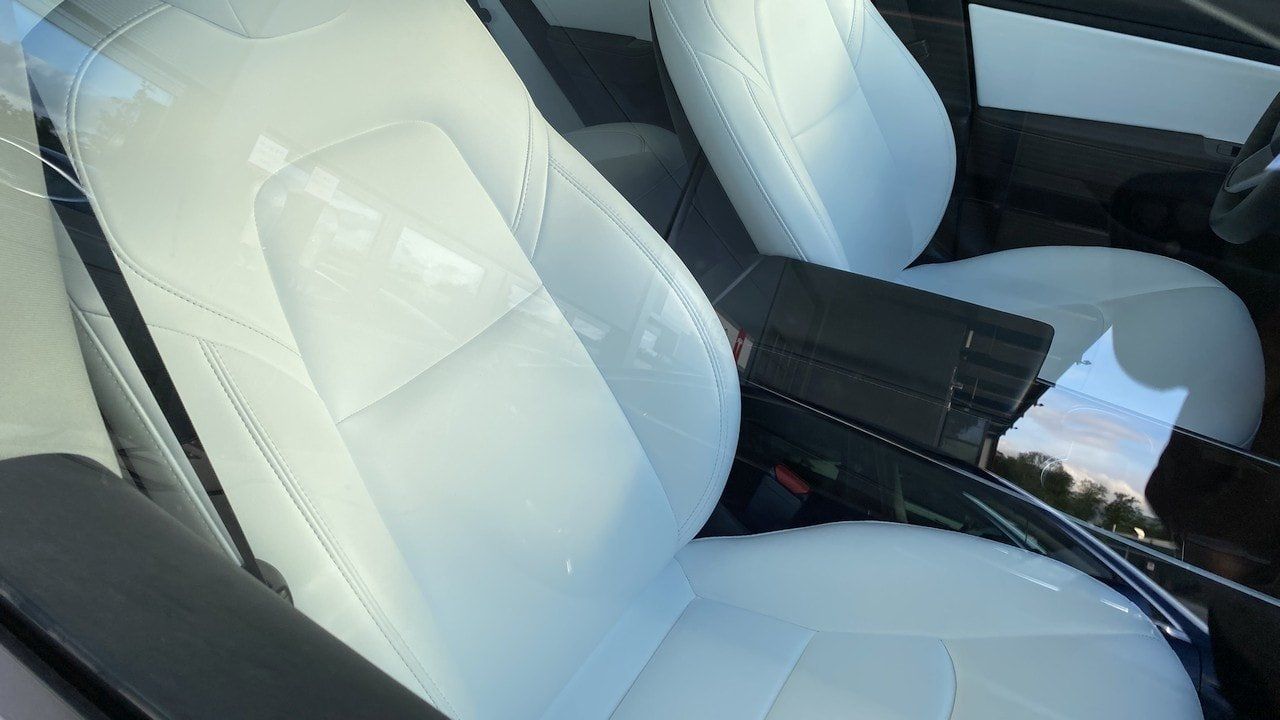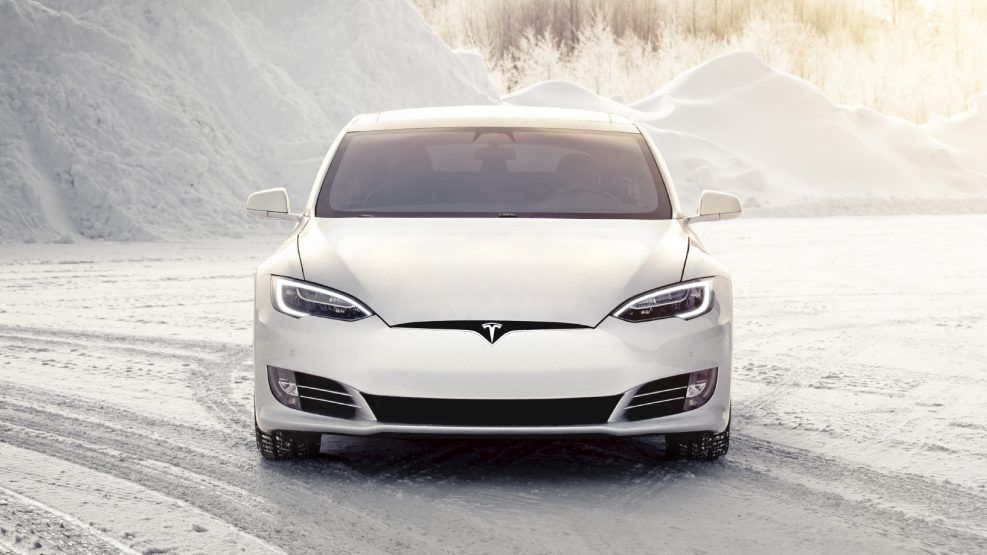White seats look great in a Tesla and are basically easy to clean. Although the artificial leather is very durable, there are still problems with stains from denim pants. These stains cannot be removed easily.
Tesla has no longer used genuine leather seats since July 2017. Before that, genuine leather was used for the black seats. However, all white seats are artificial vegan leather seats made of a textile material that is coated with a plastic on one side and looks like real leather. These seats are made of polyurethane. Compared to animal leather, artificial leather cannot absorb caring substances and therefore the care products for genuine leather are not suitable. In this post, I collect tips for sealing and cleaning the vegan leather seats, which, however, are not officially recommended by Tesla. These tips are collected from Internet forums and Facebook groups and THESE are NOT my recommendations. Use this tips at your own risk.
Trunk Light & Frunk Light & Puddle Light & Foot Well Lights & Glove box light.
Shop for more Tesla Accessories here!
Clean the white Tesla vegan leather seats
Tesla recommends in the manual to simply use warm water and a non-detergent soap. However, one reads in Internet forums that many Tesla drivers could not remove the denim abrasion with this procedure. Very often, however, the use of wet wipes for babies by is recommended against such stains.
Disclaimer: The author of this article assumes no responsibility or liability for any damage to vehicles caused by these tips.
Baby wet wipes
If you regularly wipe white Tesla seats with baby wipes for cleaning, you prevent the diffusion of color from jeans. However, you should not use normal wet wipes. They often contain solvents and other aggressive chemical substances compared to baby wipes. Artifical leather is quite sensitive and should not be treated with the wrong substances.
Isopropyl alcohol
In older vehicle manuals, Tesla recommended isopropyl alcohol to remove stubborn stains on polyurethane seats:
Polyurethane seats
Wipe up spills as soon as possible with a soft cloth soaked in warm water and a non-foaming soap. Wipe in circular motions. For difficult stains on seats in UltraWhite, use isopropyl alcohol and wipe with a damp cloth. Allow the seats to air dry after cleaning.
Meanwhile, however, newer versions of the manuals only contain this note:
Polyurethane Seats
Wipe spills as soon as possible using a soft cloth
moistened with warm water and non-detergent soap.
Wipe gently in a circular motion. After cleaning, allow
the seats to air dry.
Be careful with dyes, such as from clothing or denim,
that come into contact with the seats. Dyes can diffuse
into the seat material over time and cause staining.
This earlier recommendation probably comes from the manufacturer of the polyurethane material. The Tesla seats are made of this material by the Japanese manufacturer Ultrafabrics. Isopropyl alcohol is recommended in the manufacturer’s own cleaning instructions. Nevertheless, I would be cautious about using this solvent, as there are probably reasons why Tesla removed this note from the manual. Alcohol-based cleaners can cause severe damage to plastic, hardening it, making it brittle and cracking it. It’s important to NOT rub strong when wiping the seats with Isopropyl alcohol.
Clean the affected area
Another recommendation that you can always read in Internet forums is the Magic Sponge dirt eraser:
Magic Sponge / Dirt Eraser
This household cleaning product removes even stubborn stains and dirt due to its abrasive properties. However, extreme caution is required when using it on the Tesla seats! The dirt eraser creates abrasion and the seat material can be damaged quickly by incorrect application. The sponge should be well moistened with water and used only with very gentle pressure on the leather surface.
The Mr. Clean Magic Eraser provides a powerful clean with water alone.
Distilled water / reverse osmosis water
Another recommendation from the Tesla forum is to use distilled water and a microfiber cloth. Reverse osmosis water is produced by a special filtration. However, I doubt that the cleaning effect is as good as with the other products mentioned here. Basically, it makes sense to use distilled water anyway, for example, even with the dirt eraser. The cleaner the cleaning agent, the better.
To prevent soiling, the seats can of course also be treated with a sealant.
Tips for sealing and care of the vegan leather seats
From leather experts there are special products for the care of artificial leather. However, these differ in composition from the products for real leather. For example, Colourlock offers a care set that cleans and protects imitation leather:
The product “Gyeon Q2 Leather Seal Leather Shield” is supposed to be suitable for all types of leather and reduce the discoloration of denim by sealing. In this video, the application is explained:
My conclusion to clean white Tesla seats
I still have the black genuine leather seats in my Model S, which was built around March 2017. So unfortunately, I can’t test these compiled tips myself. If I had the white seats, I would probably wipe them regularly with baby wet wipes and perhaps also test the care set from Colourlock. I’ve been using the corresponding Colourlock set for genuine leather for years and am totally satisfied with it.
By the way: The Model 3’s steering wheel has only not been made of real leather since the end of August 2019. Before that, the vegan steering wheel could only be ordered at extra cost. But actually, Tesla drivers will soon no longer need a steering wheel anyway… 🙂
Disclaimer: The author of this article assumes no responsibility or liability for any damage to vehicles caused by these tips.
Looking for more Tesla Accessories?








